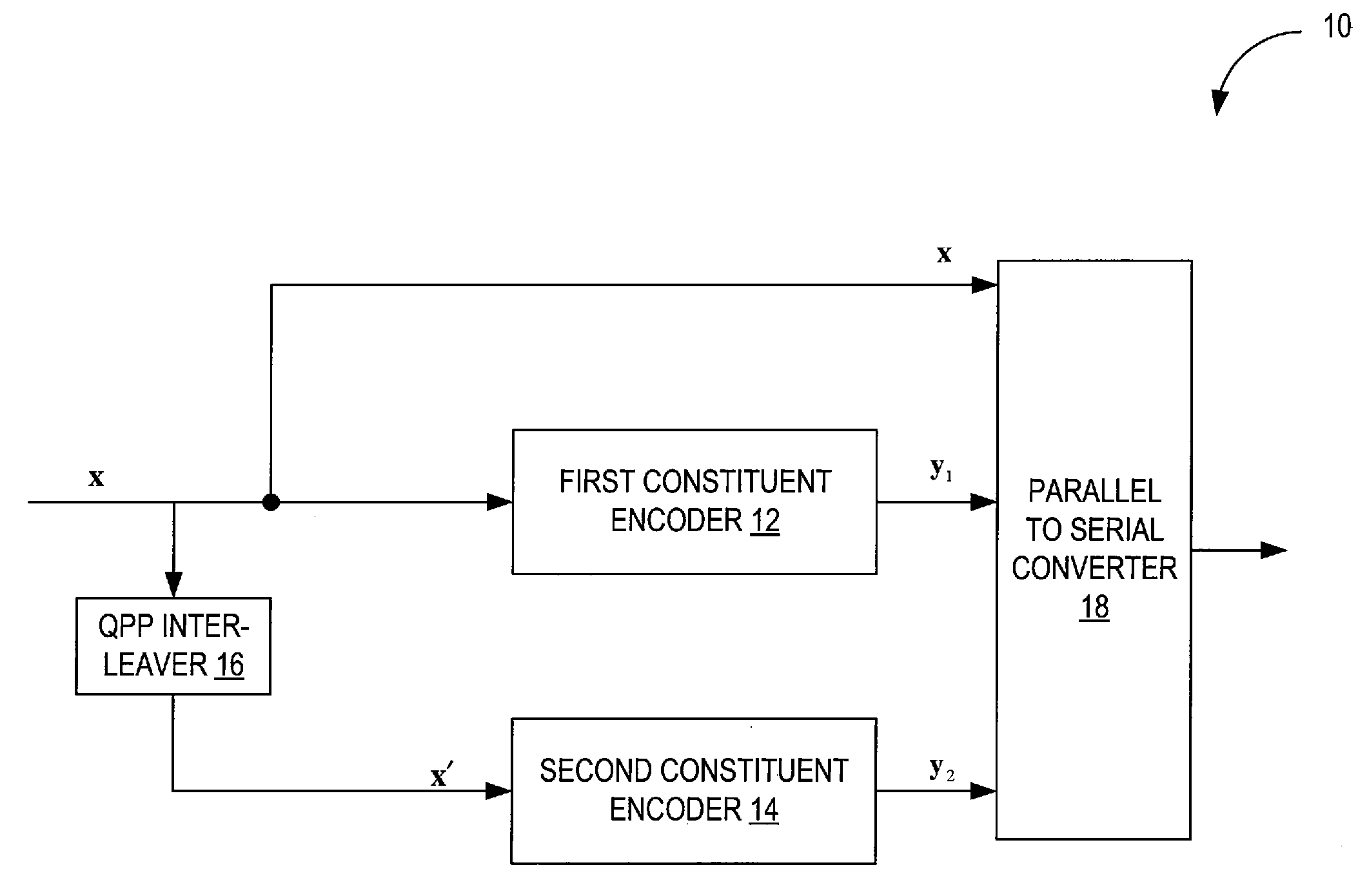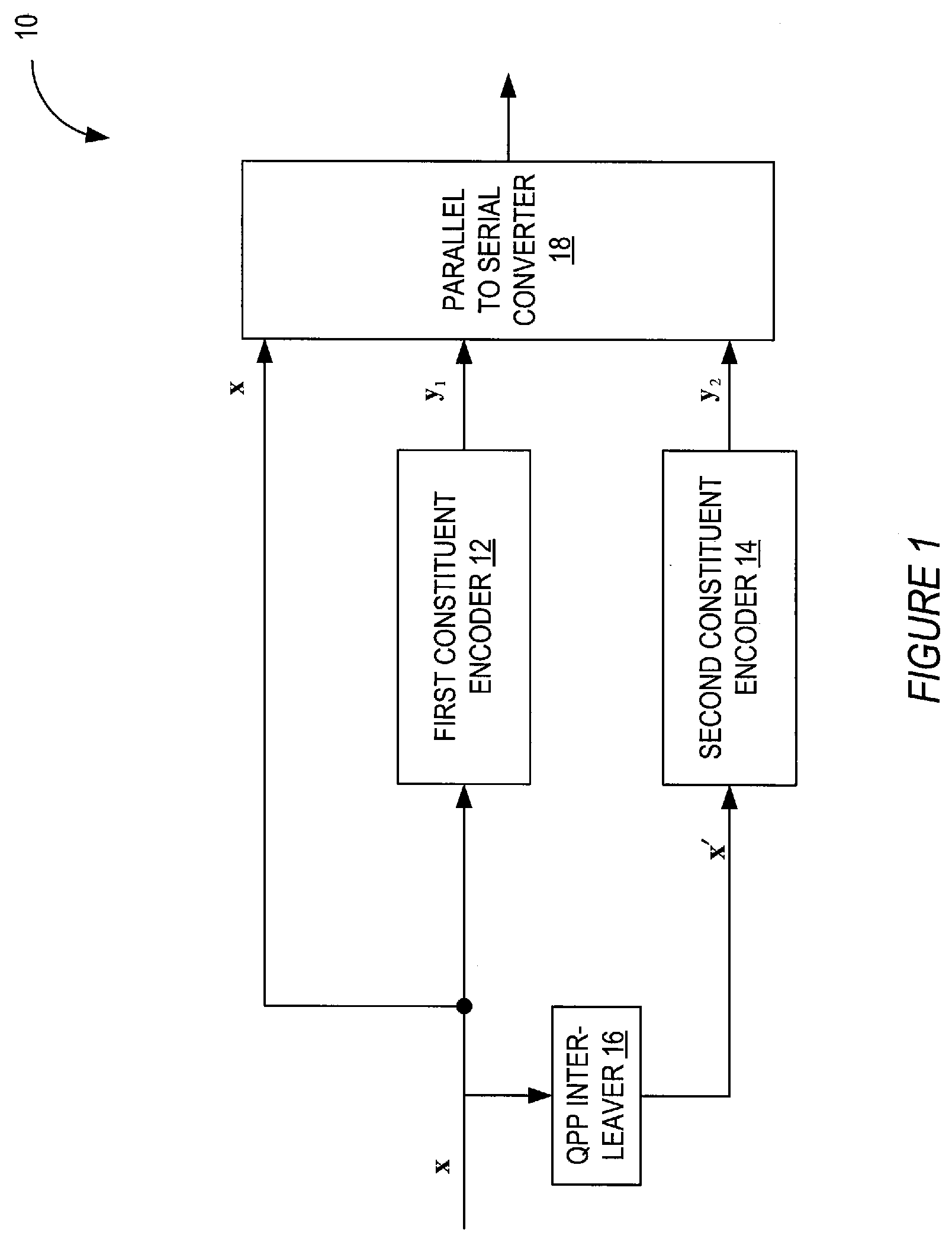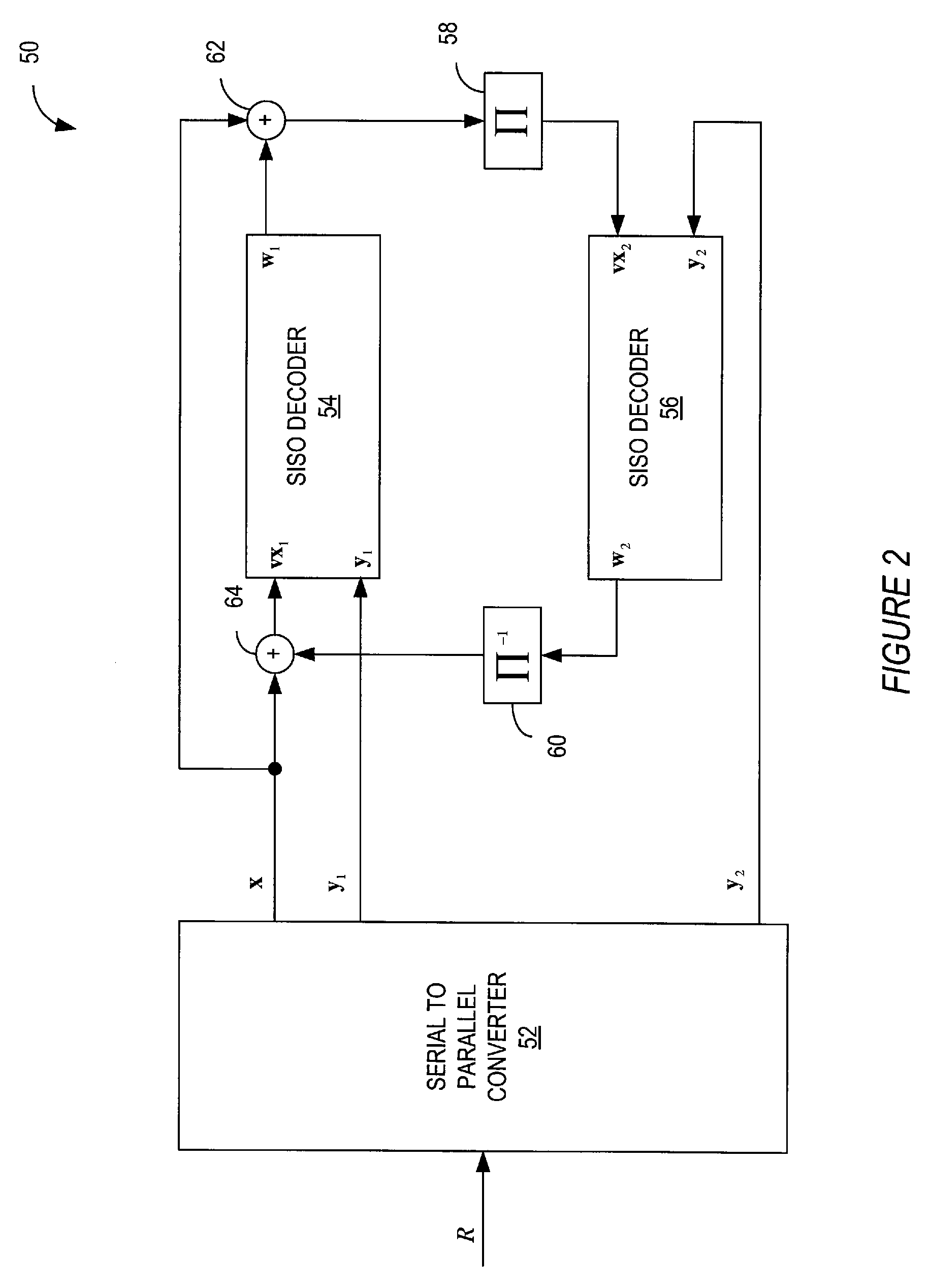QPP Interleaver/De-Interleaver for Turbo Codes
a turbo code and interleaver technology, applied in the field of turbo codes, can solve the problems of introducing errors into the transmitted data stream, co-channel and adjacent channel interference, noise, dispersion, fading,
- Summary
- Abstract
- Description
- Claims
- Application Information
AI Technical Summary
Benefits of technology
Problems solved by technology
Method used
Image
Examples
Embodiment Construction
[0011]The present invention relates generally to turbo coding for mobile communication systems. FIG. 1 shows the basic structure of a turbo encoder 10 according to one exemplary embodiment. The turbo encoder 10 comprises first and second constituent encoders 12, 14 respectively, a quadratic permutation polynomial (QPP) interleaver 16, and a parallel-to-serial converter 18. The first and second constituent encoders 12, 14 comprise systematic convolutional encoders. The same convolutional encoder may be used as both the first and second constituent encoders 12, 14. The first constituent encoder 12 operates on an input bit stream x, also referred to as the systematic bitstream, to generate a first parity bit stream y1. The second constituent encoder 14 operates on an interleaved bit stream x′ to generate second parity bits y2. QPP interleaver 16 interleaves the input bit stream x to generate the interleaved bit stream x′. The interleaved bit stream x′ represents a reordering of the ori...
PUM
 Login to View More
Login to View More Abstract
Description
Claims
Application Information
 Login to View More
Login to View More - R&D
- Intellectual Property
- Life Sciences
- Materials
- Tech Scout
- Unparalleled Data Quality
- Higher Quality Content
- 60% Fewer Hallucinations
Browse by: Latest US Patents, China's latest patents, Technical Efficacy Thesaurus, Application Domain, Technology Topic, Popular Technical Reports.
© 2025 PatSnap. All rights reserved.Legal|Privacy policy|Modern Slavery Act Transparency Statement|Sitemap|About US| Contact US: help@patsnap.com



